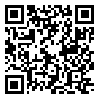Volume 15, Issue 2 (2015)
QJER 2015, 15(2): 27-47 |
Back to browse issues page
Download citation:
BibTeX | RIS | EndNote | Medlars | ProCite | Reference Manager | RefWorks
Send citation to:



BibTeX | RIS | EndNote | Medlars | ProCite | Reference Manager | RefWorks
Send citation to:
Jalaee S A, Ghassemi A, Sattari O. Simulating Consumption Function and Forecasting Iran’s Consumption until 1404 Horizon Using Genetic and Particle Swarm Optimization Algorithm. QJER 2015; 15 (2) :27-47
URL: http://ecor.modares.ac.ir/article-18-5314-en.html
URL: http://ecor.modares.ac.ir/article-18-5314-en.html
1- Professor, Faculty of Management and Economics, Shahid Bahonar University of Kerman,
2- MA Student of Economics, Shahid Bahonar University of Kerman
3- Phd student Tarbiat Modares University
2- MA Student of Economics, Shahid Bahonar University of Kerman
3- Phd student Tarbiat Modares University
Abstract: (10222 Views)
The consumption expenditure is a key element of macroeconomic analyses, which accounts for considerable share of aggregate demand in Iran. Any effort for forecasting the future consumption trend is of special importance for policy-makers. In this paper, we specify a consumption model relying on theoretical basics in order to obtain desirable forecasts. On the basis of Duesenberry and Friedman consumption theories, we use genetic algorithm (GA) and particle swarm optimization (PSO) algorithm to simulate Iranians consumption during 1973-2009. Then we select the superior model in terms of prediction power criteria and forecast consumption until 2025. According to the results, the PSO algorithm is efficient and accurate in forecasting consumption; and consumption behavior of Iranians is consistent with Duesenberry theory. In addition, the simulations by exponential consumption model indicate increasing average propensity to consume until 2025.
Keywords: genetic algorithm, Particle Swarm Optimization Algorithm, Simulation, Consumption Model, Permanent Income, Relative Income
Article Type: Research Paper |
Subject:
C63 - Computational Techniques; Simulation Modeling|E17 - Forecasting and Simulation|E21 - Consumption; Saving; Wealth
Received: 2012/08/7 | Accepted: 2013/10/5 | Published: 2015/04/21
Received: 2012/08/7 | Accepted: 2013/10/5 | Published: 2015/04/21
| Rights and permissions | |
 |
This work is licensed under a Creative Commons Attribution-NonCommercial 4.0 International License. |







